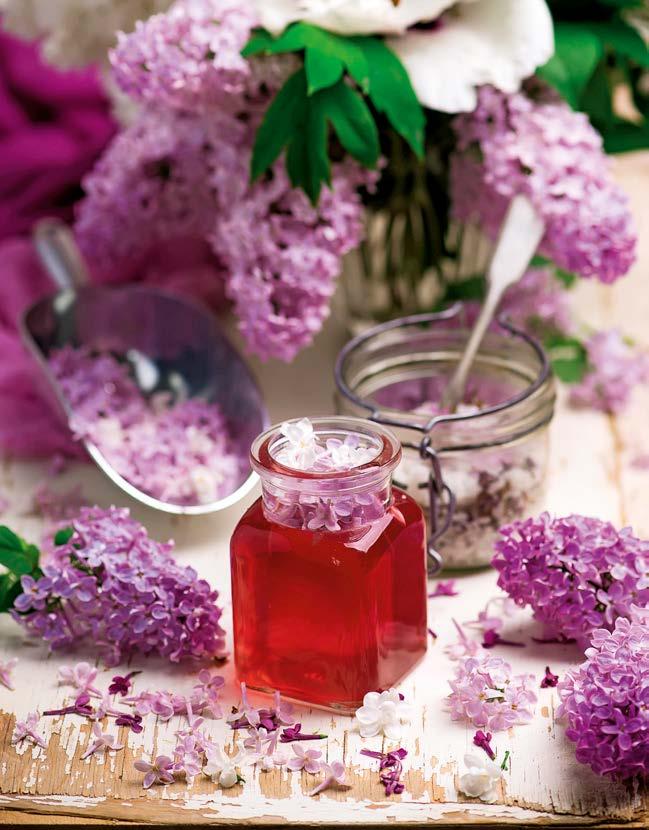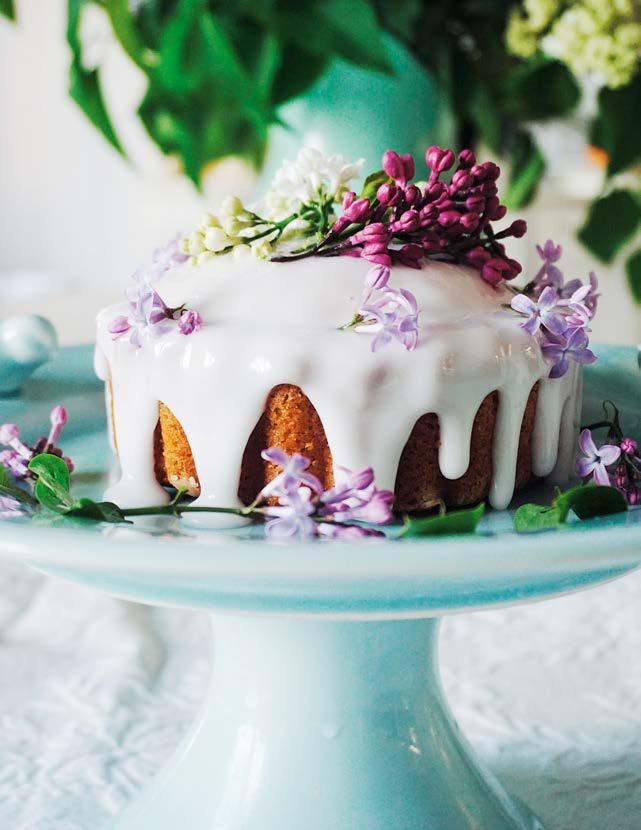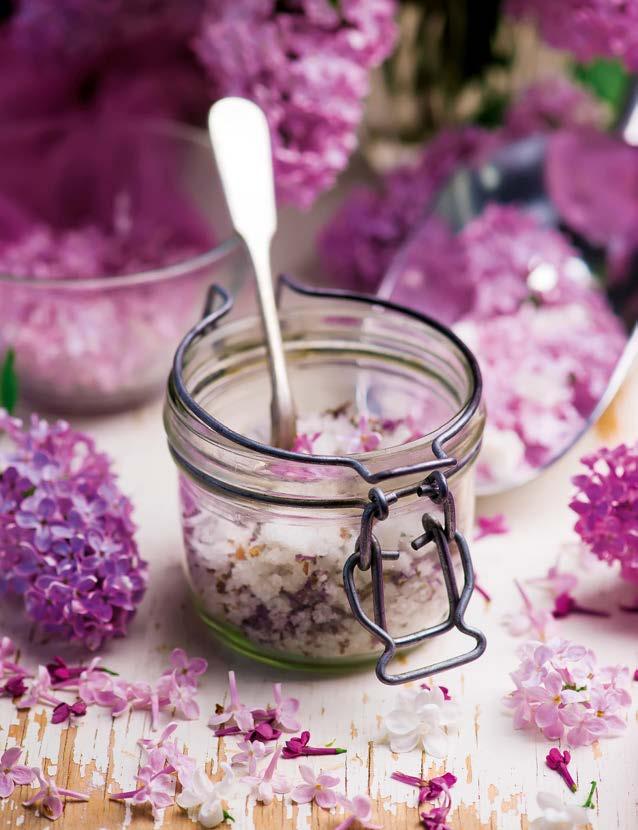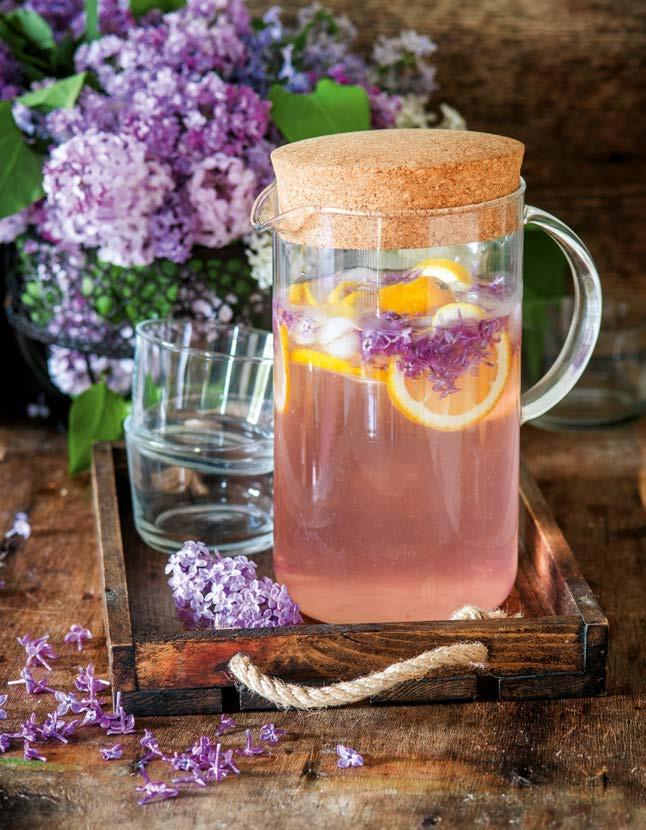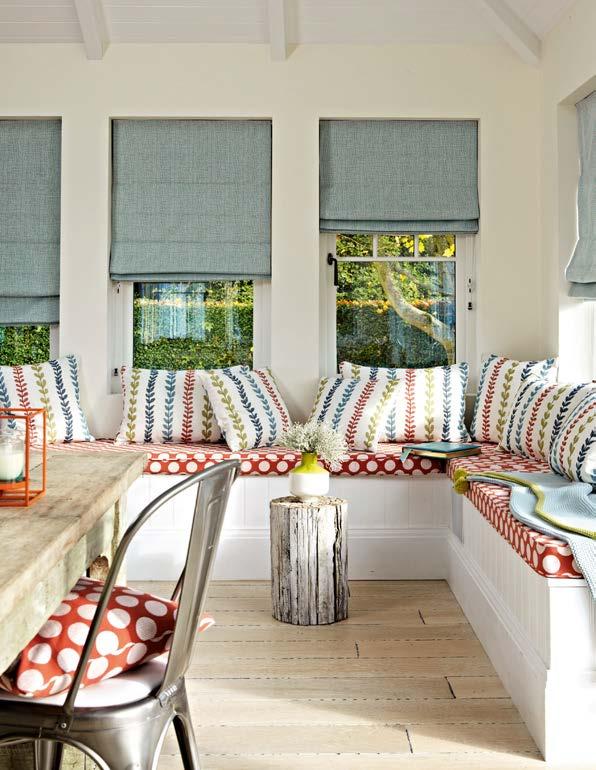
8 minute read
THE SEASONAL HOME: SPRING Bring joyful colour
THE SEASONAL HOME: Spring
Add joyful colour to the home with displays of spring flowers, from daffodils and tulips to wildflowers and cherry blossom
ABOVE Pretty shades of pastel pink and soft white blossom fi ll the the branches of apple and cherry trees in spring, a harbinger of the delicious fruit to come. RIGHT Tulips come in all manner of styles and colours, including these decadent ‘Dream Touch’ and ‘Pink Parrot’ varieties, here arranged with another spring favourite, cream hyacinth. Spring bursts forth with long-awaited blooms full of bright, cheerful colour, and whilst traditional spring flowers, such as sunny daffodils, are increasingly making earlier appearances, florist Rowan Blossom says, “For me, March is synonymous with narcissi. Perhaps because my father is a proud Welshman and we always wear a daffodil to celebrate St David’s Day.”
A kitchen in spring is almost incomplete without a pitcher full of daffodils and there is a huge range of colours and varieties to choose from. “Of course, the first type to spring to mind is the cheerful yolky yellow one, which cannot fail to raise a smile,” says Blossom. “But there are so many others which are a joy to create arrangements with, from the pure white ‘Thalia’ to the lemony ‘Toto’, and even an incredible peachy-pink variety called ‘Mary Gay Lirette’.”
Another flower that is closely associated with spring is the ever-popular tulip. Again, this comes in an incredible array of colours and shapes – from cleanlined simple cups to double-flowered peony-like blooms, and extravagant parrot tulips with curled and fringed petals to beautiful striped hybrids. Placing a small number of tulips on their own in a vase will delight, particularly if they are of the frillier variety.
“This season offers a bounty of luscious British beauties to play with, including tulips, ranunculus and anemone,” says Blossom. Ranunculus, with its dense clusters of petals, offers an aesthetic akin to layered roses, and comes in a palette of colours, from bright and light, to deep and dramatic. Consider freesias, too, whether in pastel or stronger shades, to offer delicate beauty as well as incredible scent, and hyacinths, with their incredible heady aroma. Lily of the valley are another beautifully scented choice.
Wildflowers are a visual delight come spring. Fritillaries, bluebells, crocuses, grape hyacinths and even daisies can all be used to create charming arrangements in dainty bud vases. As can the clouds of pink and white blossom bursting forth on fruit trees at this time of year. These are a joy to behold and can be used to create a wonderfully simple yet impactful display on a console table in a hallway. Lilac blossoms, with their heavenly scent, provide beautiful sprays of tiny flowers, and can be used for culinary purposes too (see p99). Peonies are a herald of summer, though can start to appear sooner should the weather be warmer than usual, and “are a showstopper in any arrangement,” Blossom enthuses.
Spring flowers allow for richly diverse arrangements, full of bright colours, shapes and textures, as we will explore over the coming pages, and are perfect for lifting the spirits when placed to catch the eye as we go about our daily lives at home.
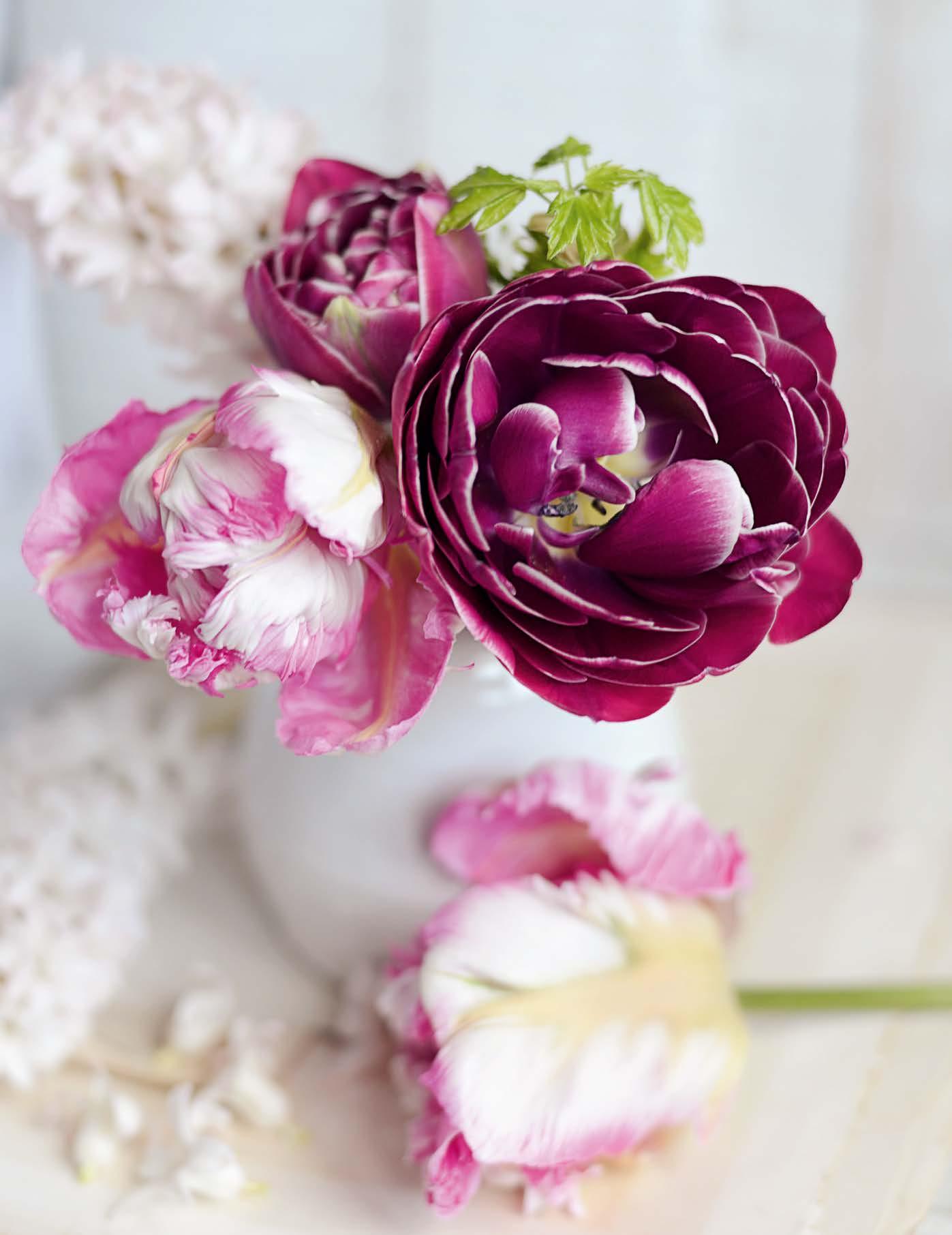
Spring celebration
Discover beautiful ways to showcase the variety and colour of spring blooms
Rowan Blossom, the Notting Hill and Cotswolds-based florist, and author of Living with Flowers & Floriography (published April 2021), creates a beautiful celebration of spring flowers in a compote vase arrangement.
“For me, spring is all about embracing the lighter and brighter days, and I love to use playful colours. One of my go-to combinations is pairing pretty pinks with buttery yellows and creams and lots of vibrant zingy foliages – a charming palette that feels hopeful, cheerful and is guaranteed to look pretty in any home.
“Here (right), I have used ‘Butterfly’ ranunculus, ‘Cafe Latte’ roses, ‘Carnival’ ranunculus, ‘Cloni’ ranunculus, daffodils, daucus, forget-me-nots, poppies and ‘Sarah Bernhardt’ peonies, along with asparagus fern, berried ivy, guelder roses, senico and soft rucus foliages.
“A compote vase is a footed vessel that was traditionally used for serving nuts or fruit and is a lovely thing to arrange flowers in. I have used chicken wire to create a central support to elevate the centre of the arrangement. The reason it looks so special – perhaps as a centrepiece for a Sunday lunch – is that you don’t see the ‘mechanics’. There are no stems or water on show – it is all about the blooms. If being used as a centrepiece, consider the design ‘in the round’ so it looks lovely from all angles.”
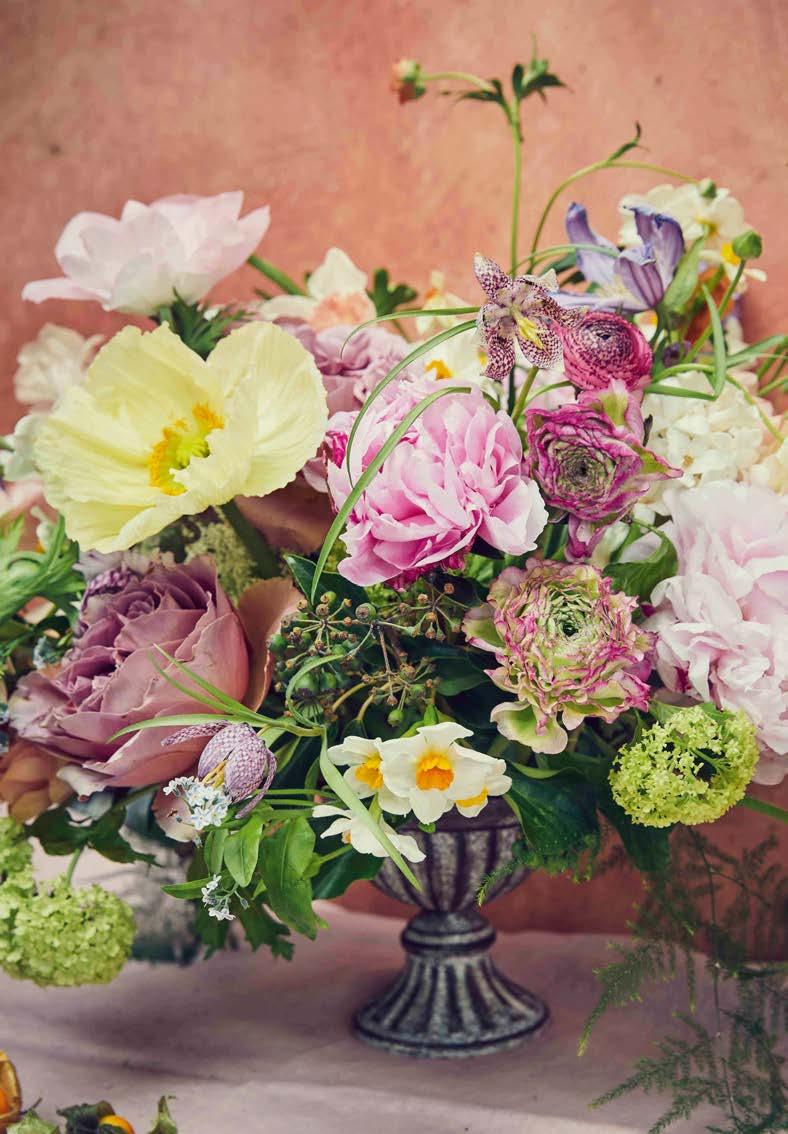
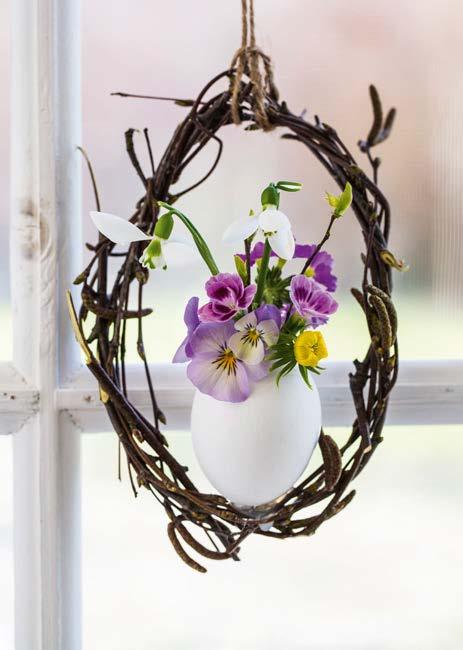
BUDDING IDEA For small flowers – such as violas, crocuses, perhaps late snowdrops, bluebells, even buttercups and daisies or other wild flowers – a sweet little arrangement can be made in a simple bud vase on a kitchen windowsill to raise a smile. Or use mutliple vases or bottles in colurful glass for a bright display.
For a more creative idea, consider other vessels, such as eggshells, which can be used as miniature vases for smaller flowers. To do this, carefully cut the top off an egg, remove the contents and clean the inside thoroughly. Create a simple wreath made of entwined twigs, glue the egg on to it thoroughly and hang using string or ribbon.
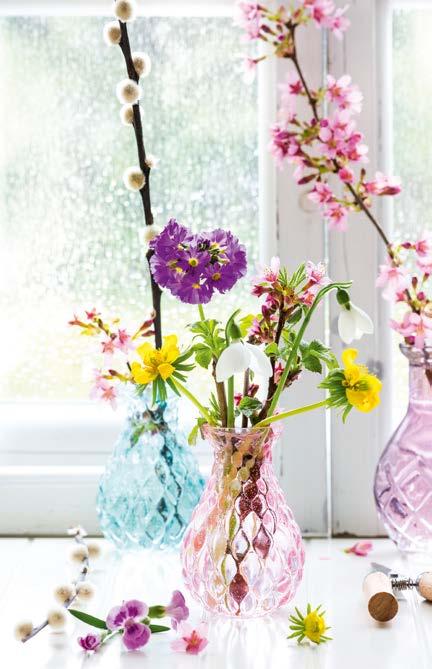
TIPS FOR TULIPS & DAFFODILS
• Tulips continue to grow after cutting so buy flowers with stems shorter than the leaves for longevity.
• Some may like the way tulips organically grow, change shape and droop over time within an arrangement – if so, turn the vase each day as they will grow towards sunlight. For straight stems, adding copper coins or a little sugar to the vase water will help them keep upright.
• When cut, daffodils release sap that can kill other flowers when placed in a mixed arrangement, so pop them in a bucket of water for 24 hours to condition them before arranging (and do not cut stems again).
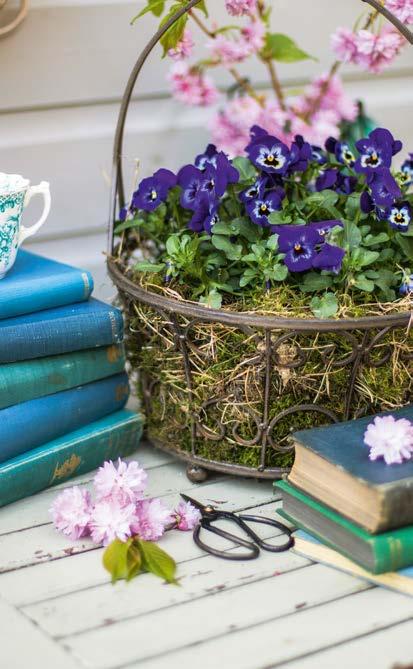
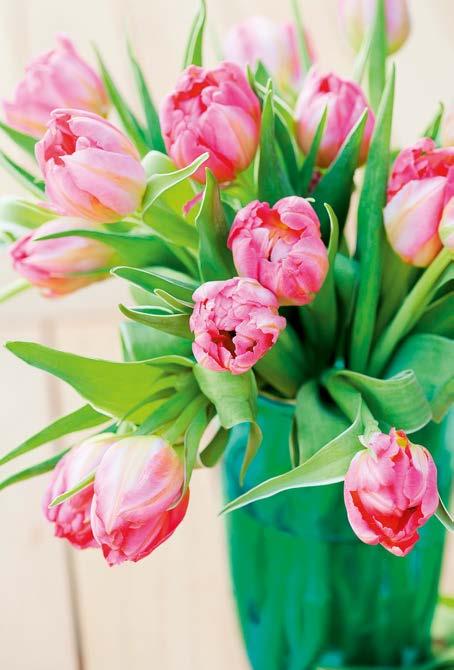
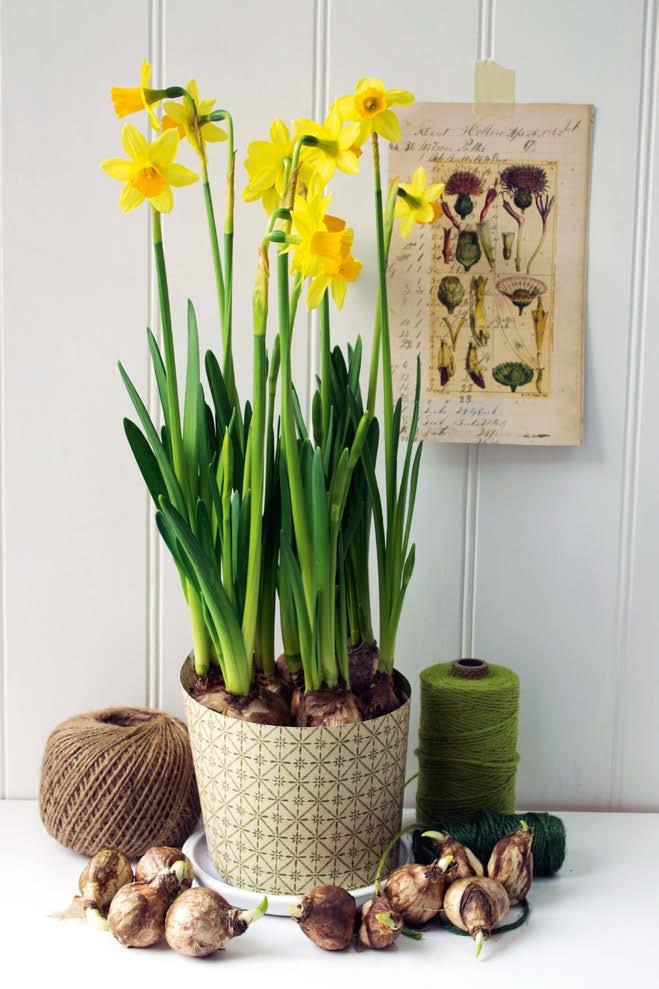
MAKE AN ENTRANCE Remember the home’s exterior too. A wreath for the front door made using blossom is a welcome sight, as are hanging baskets or window boxes. These can be filled with flowers such as violas, cowslips, pinks or dwarf wallflowers for colourful impact.
CHEERFUL GIFT Bulb plants such as hyacinths or small ‘Tête à tête’ narcissi make for a lovely springtime gift to bring a smile to a loved one’s face. Present them in a painted pot or wrapped in tissue paper or old sheet music and tie with string, raffia or ribbon.
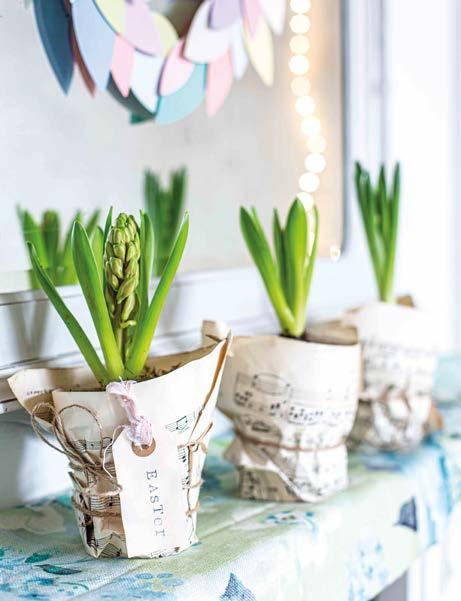
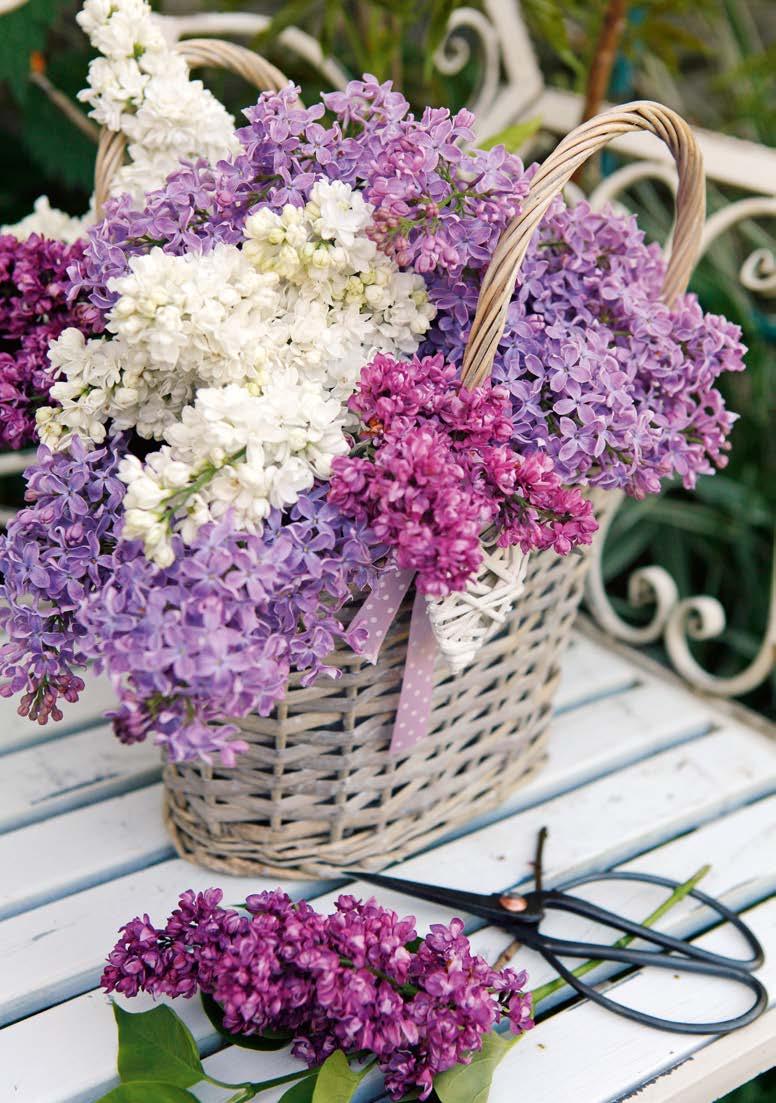
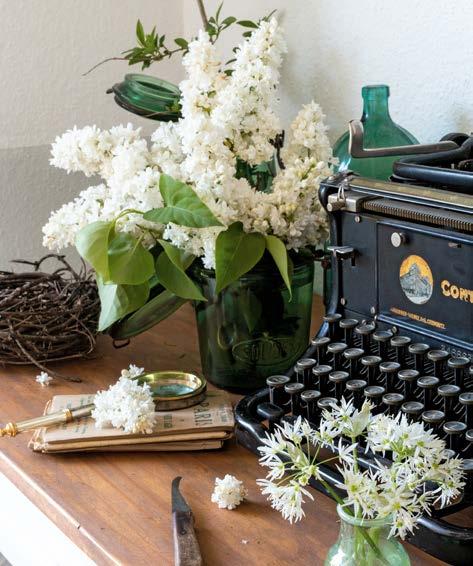
Just now the lilac is in bloom, All before my little room; And in my flower-beds, I think, Smile the carnation and the pink
The Old Vicarage, Grantchester, Rupert Brooke (1887–1915)
Lovely lilacs
Grown in the garden or found in hedgerows and woodland edges, these densely packed branches of tiny flowers have a beautiful, decorative impact in simple displays. They come in a rich spectrum of purple hues – from delicate mauves to punchy violets – as well as ethereal whites. The flowers provide a heavenly sweet scent, and can be used for culinary purposes too. Lilac has a sweet floral flavour with a hint of citrus, imbuing a delicate zest to cakes or drinks.
LILAC SUGAR
As with lavender, the flowers of lilacs can be used to scent and flavour sugar. Simply give branches a good shake to remove any bugs and take off the petals. Layer sugar and petals in a jar and shake gently every day. After around a week or so, once the sugar is dry, sift it to remove the petals. The sugar can be used in baking to lightly flavour cakes, sprinkled over shortbread or stirred into tea – it is a lovely addition to camomile tea.
LILAC SYRUP
The deeper the colour of the blooms, the more intense the lilac of the syrup will be. Simply add petals to a simple syrup solution of water, sugar and lemon and simmer for a few minutes. Once cooled, strained and bottled, the syrup can be drizzled on pancakes, or used as a cordial in sparkling water, added to cocktails or used to make a floral-infused pitcher of lemonade. n
ABOVE LEFT Lilacs come in all sorts of shades, from white to deepest violet. LEFT White lilacs offer a refreshing alternative to purple varieties and as they won’t colour syrups they are best used for an alluring and aromatic display OPPOSITE, CLOCKWISE FROM TOP LEFT Lilac flowers can be used to create a delicious syrup to use as a cordial or to add to cocktails for a delicious floral note – particularly complementary to the botanicals in a gin. Use lilac sugar to add an unexpected twist to a simple sponge and lilac flowers to decorate it. Lilac sugar can be used in much the same way as lavender sugar to add floral notes to sweet treats. There are few things more refreshing on a sunny day than a jug of homemade lemonade, particularly when flavoured with lilac. Mix lilac syrup with freshly squeezed lemon juice, top with water and serve with ice, lemon slices and a sprinkling of lilac flowers.
